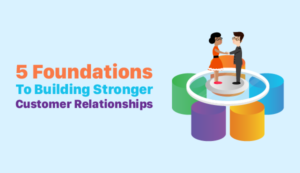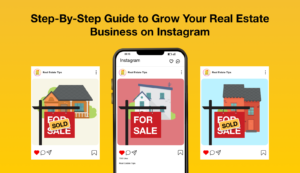Building a clientele base for a small business is a constant challenge. Seeking out new clients while nurturing and maintaining existing ones for repeat business is no easy task. So here’s a 3-step guide to help.
The idea of a “sales funnel”, “customer funnel” or similarly called a “marketing” or “sales process funnel” is not a new idea. In some instances with a new twist thrown in, like the “digital sales funnel.”
The idea dates back to Elmo Lewis, an advertiser and prolific salesperson who developed the “sales process” which then was later stylized as the funnel and added onto by those since.
Enough with the history lesson though: Your contemporary funnel needs to be multi-platformed and flexible to take your prospect from awareness of you to a repeat client that trusts you. Building and improving upon a sales funnel (or any sales technique) requires listening to your clients needs and careful negotiation. You ideally want to take your client on a controlled journey – building a narrative for them that you control.

Step 1: Begin with a Questionnaire (For Yourself About Your Client)
Before you can call them a client, you have to properly identify your prospects first. It’s here we start at the wide-end of the funnel. According to the entrepreneur Allen Taylor, the initial step is to build broad outline, or sketch of your customer.
The trick is to ask yourself qualifying questions about who your ideal customers are and what issues they face (and how you can help solve them). Ultimately you’re outlining why people are using you (or want to), who they are and why they need to come back.
Ask Your Client!
Similarly to above, don’t be afraid to ask your client questions. You’ve qualified what client you want, now it’s time to see what they want. At this stage of the funnel they are a committed prospect, or a nascent customer. Have them take a similar questionnaire based on what their wants and needs may be. They may not always need a pencil either; you can collect this info through various ways including polling, surveys or just simply a conversation about their needs and wants.
An added byproduct of having a conversation with your client is it’s a great way to build a repertoire with your new customer, while humanizing you both. A face-to-face interaction (even through a video chat) can go a long way.
Tip: Daylite makes it simple to capture new business and refer back to the client needs by using a Form. You can even automate this by having a prospect fill out a form on your website and use Zapier to automatically suck that into Daylite.
After creating a definition of your client’s needs, now is the time to make an offer. At this point, both of you know what you want, and you know how to build toward your customer’s goals with their specific needs and wants in play. Keep ind mind, documentation is key. Plan your offer out as well as you can. You know where their interest and desires lie, tailor your offer to those. If you can tailor your offer from the information learned above, they’ll have no choice but to accept; like a moth to a flame.
Tip: You can use Daylite to create and send an estimate which allows you to keep track of what you first offered them instead of relying on memory or digging through emails.
Step 2: Intent and Negotiation
The funnel is getting slimmer now. Your prospect is aware, they’re interested and now you’ve addressed their considerations and made an offer. Do they want to negotiate? They probably will. Negotiation isn’t necessarily a negative. You have your funnel working, now it’s time to improve on it.
Chris Voss is a former FBI kidnapping negotiator and author. In his book, “Never Split The Difference” Voss explains the key to a successful negotiation is to get the other party to see your side of the equation and empathize. If you can get them to empathize with your position, you can create the best possible deal for yourself.
This not only works in life and death situations, but remarkably well for daily or deal-making business situations. Remember those face to face conversations above? The quickest way to navigate a negotiation is making sure to sit down and hash it out face-to-face.
Here is where you ultimately want to close the deal and build a sense of trust between everyone. A happy customer is a potentially repeat customer.
Step 3: The Art of the Delivery and Afterwards – Client Retention
Above has many “clinch” moments – points where you want to seal the deal, and ultimately your customer will descend further into the funnel. Here perhaps, is the most important moment: the delivery. Depending on your business, this may just be the beginning where you now have to deliver on a service.
Tip: By using Daylite Opportunities & Projects, you can convert a won deal into a project and then track all the moving pieces and steps to make sure you’re following through on every promised detail. This helps make sure nothing slips through the cracks. To learn more about using Daylite to execute on projects, check out this tutorial or sign up for our Executing on Plans & Projects webinar.
At this point you’ve negotiated a new customer and delivered your service or product, now you want to turn them into a repeat, loyal, happy client. While you could stop at this point and say to yourself that you or your work will speak for itself in its efficacy or its prowess or skill, you can always do more by following up.
Following up with your client is the last and maybe most vital piece of the funnel – it is the apex point after all. Your options are fairly open here: have them take an exit poll or survey, or perhaps another conversation. Ask key questions and don’t be afraid to lead: what they found most helpful or useful, what could use improvement and why they’d want to return to you at a later date.
All of these answers should give you a better picture of how to retain these persons and valuable feedback on your own workflow and sales tactics. Documentation (as always) is once again key.
Tip: Daylite helps you make sure you remember to follow up for repeat business by creating customer lists that auto-update so you make sure you’re staying top of mind.
Conclusion
Creating, maintaining and refining a sales funnel is a crucial tool to grow your small business. While the sales funnel concept has its detractors, namely those who believe it’s an outmoded concept. No one can deny that it plays upon proven principles though: prospect attraction, listening to your customer’s concerns and how to effectively negotiate a variety of tricky situations.
While the mediums may have changed, you’re still the one ultimately controlling the narrative that your customer is buying into. That will always be paramount to any sales technique now or in the future. If you’re pouring your time and energy into sales and marketing, it’s always easier to use a funnel, right?
To learn more about using Daylite to turn leads into customers & repeat customers, signup for our Close More Deals with Daylite webinar.
About the author:
Xander Cavalier is a former radio broadcaster and community organizer with grass-roots experience in Northern Ontario. He is currently based in the GTA. You may reach out to him on LinkedIn.


